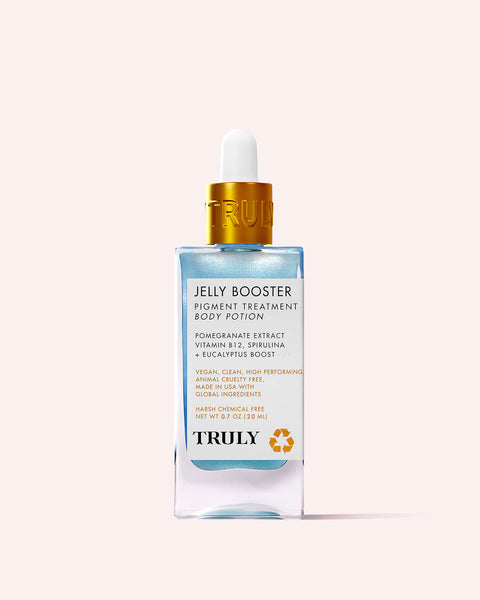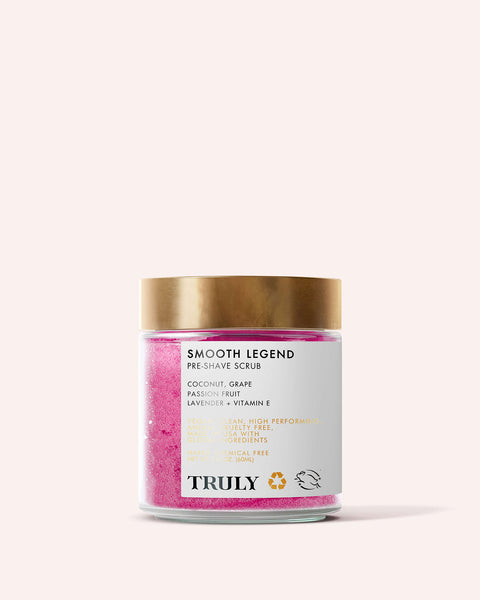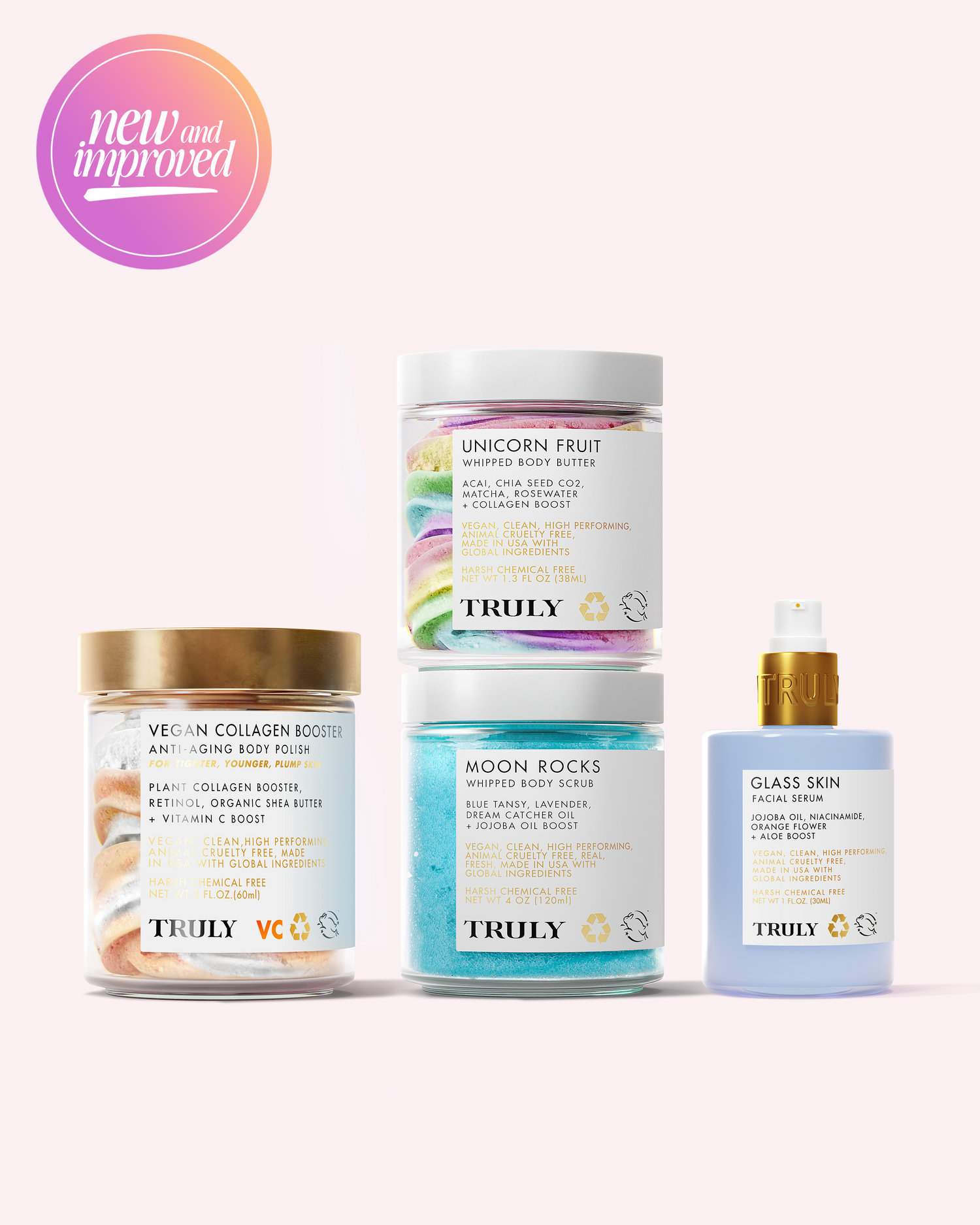Glycolic Acid vs Salicylic Acid: What's the Difference?

Glycolic acid vs salicylic acid — which should you choose for your skin? Both glycolic acid and salicylic acid are hydroxy acids used primarily for their exfoliating properties. However, each acts differently on the skin. While salicylic acid and glycolic acid offer some of the same skincare benefits, they differ in several ways.
What is better, glycolic acid or salicylic acid? When it comes to deciding between salicylic acid vs glycolic acid it’s important to understand how each acid works. This way, you’ll be able to make the most informed decision for your skin. Here’s everything you need to know about these powerhouse hydroxy acids and which one better suits your skin’s needs.
What is the Difference Between Glycolic Acid and Salicylic Acid?
Glycolic acid is an alpha hydroxy acid (AHA) made from sugar cane that acts as a chemical exfoliant to treat multiple skin concerns. With the smallest molecular size of all the AHAs, glycolic acid penetrates deeply into the skin. It works by dissolving the bonds between dead skin cells on the surface of the skin to reveal fresh, youthful skin. Glycolic acid is often used to treat clogged pores, signs of aging, hyperpigmentation, and uneven skin texture.
Salicylic acid is a beta hydroxy acid (BHA) derived from willow bark. Unlike glycolic acid, which is water-soluble, salicylic acid is oil-soluble, meaning it can penetrate even deeper into the pores to dissolve excess oil while sloughing away dead cells. This makes it a highly effective treatment for acne, blackheads, and clogged pores. It also has anti-inflammatory properties, which can help minimize redness.
Here are the key differences between glycolic acid vs salicylic acid:
1: Chemical structure: Glycolic acid is an AHA derived from sugar cane that’s water-soluble. Salicylic acid is a BHA derived from willow bark that is oil-soluble.
2: Mechanism: Glycolic acid dissolves the bonds between dead cells on the surface of the skin, revealing brighter, smoother skin underneath. Salicylic acid, on the other hand, penetrates deep into the pores to dissolve dead skin cells and excess sebum.
3: Skin concerns: Glycolic acid is better for surface-level skin concerns such as signs of aging, uneven skin texture, and hyperpigmentation. Salicylic acid, conversely, is more effective at addressing acne and clogged pores.
4: Skin type: Glycolic acid is better for people with normal to dry skin while salicylic acid is better for those with oily skin or acne-prone skin.
Glycolic Acid vs Salicylic Acid: Which is Better?
Both glycolic acid and salicylic acid are excellent exfoliators but they work in different ways. Glycolic acid works on the outermost layer of the skin while salicylic acid penetrates the deeper layers of skin. Glycolic acid is considered more effective for skin concerns like hyperpigmentation and signs of aging while salicylic acid is the better option for targeting acne breakouts.
Glycolic Acid is Better for Anti-Aging
Glycolic acid exfoliates the skin’s surface, promoting cell turnover and collagen production. This can help improve the appearance of fine lines, wrinkles, and other signs of aging, resulting in smoother, more youthful-looking skin.
Salicylic Acid is Better for Acne
Salicylic acid penetrates deep into the pores to dissolve oil, unclog pores, and prevent acne breakouts. Since sebum can clog your pores, increasing your risk of a breakout, salicylic acid balances sebum production to prevent clogging—and ultimately acne. Its antimicrobial and anti-inflammatory properties also help reduce redness and swelling associated with acne, making it an effective acne treatment.
Glycolic Acid is Better at Fading Dark Spots and Discoloration
Due to its exfoliating properties, glycolic acid can help fade dark spots, hyperpigmentation, and uneven skin tone by sloughing off dead skin cells and promoting cell turnover. Regular use of glycolic acid can help promote a more even skin tone. You’ll find it in cleansers, toners, serums, and chemical peels, all of which can help to address hyperpigmentation.
Salicylic Acid is Better for Minimizing Shine and Large Pores
Salicylic acid’s ability to penetrate deep into the pores and decrease excess oil makes it an effective treatment for minimizing shine and reducing the appearance of large pores. By keeping pores clear and reducing oil production, salicylic acid can make the skin appear more matte.
Glycolic Acid May Be Better at Fading Acne Scars
Studies show that glycolic acid used together with retinol can help improve acne scars and reduce post-inflammatory hyperpigmentation. Thanks to its resurfacing effects and keratolytic properties, glycolic acid may improve the appearance of atrophic acne scars.
Shop Glycolic and Salicylic Acid Products
Here are some of our favorite skincare products that contain glycolic acid and salicylic acid.
Truly’s 24K Gold Black Soap Cleanser
SHOP NOW
Powered by salicylic acid, charcoal, and African black soap, this exfoliating cleanser absorbs excess oil and pore clogging impurities for a clear, blemish-free complexion.
Truly’s Moon Rocks Whipped Scrub
SHOP NOW
A sugar-based, spa-scented scrub formulated with 100% organic coconut oil, brightening lavender, and pore-clearing salicylic acid to unlock your clearest, smoothest and glowiest skin.
Truly’s Bodne Routine
SHOP NOW
Your complete skincare routine for body acne! This 4-step set harnesses the exfoliating and purifying powers of both glycolic acid and salicylic acid, along with other powerhouse active ingredients like lactic acid, niacinamide, and mandelic acid.
Can You Use Glycolic Acid and Salicylic Acid Together?
You can use glycolic acid and salicylic acid in the same routine but it’s important to do so sparingly to avoid irritating your skin. Salicylic and glycolic acid actually play well together. But they need to be used together properly, otherwise the combo could lead to dryness, redness, and flaking.
If you have oily or acne-prone skin, you should be able to use these exfoliating acids 3-4 times per week, or possibly even daily. If you have sensitive skin, however, it’s best to use salicylic and glycolic acid products sparingly to avoid side effects like irritation. Either use on alternate days or combined in one treatment 1-2 times per week.
Speak to your dermatologist if you have any concerns about using these skin care ingredients. They are typically safe, especially when used in low concentrations. However, if you have a skin condition, we recommend seeking a professional opinion first.
Glycolic Acid vs Salicylic Acid: How to Use
If you’re using each ingredient separately to target a specific skin concern, most people should be able to use them daily. Those with sensitive skin should start by slowly incorporating them into their routine. Once your skin adjusts, you can increase the frequency.
If you’re new to using salicylic acid or glycolic acid, start with a product that contains a low concentration of the ingredient so your skin can adjust to the exfoliating acid and minimize the risk of irritation or sensitivity.
After using your glycolic acid or salicylic acid product, always follow up with a lightweight moisturizer or hydrating serum, plus sunscreen with SPF 30 or higher to hydrate your skin and protect it against sun damage.
Is Salicylic Acid or Glycolic Acid Better?
Glycolic acid and salicylic acid are both excellent chemical exfoliants that can help treat a number of skin concerns. When it comes to choosing the best acid for your skin, it all comes down to factors like skin type and specific concerns.
If you have oily or acne-prone skin and regularly deal with blackheads, painful pimples, or large pores, salicylic acid is the best choice for you. If you have mature or dry skin and want to treat fine lines, wrinkles, or hyperpigmentation, glycolic acid is the better option for you.
Glycolic Acid vs Salicylic Acid: Which One is Right for You?
Still unsure which one to choose? Here are the factors to consider when it comes to choosing between glycolic and salicylic acid.
Choose glycolic acid if you:
• want to reduce the appearance of fine lines and wrinkles
• are experiencing dark spots or discoloration
• want to brighten and even out your skin tone
Choose salicylic acid if you:
• have oily or acne-prone skin
• have active breakouts
• deal with inflammatory acne breakouts
• have clogged pores
• want to to prevent future blemishes
Like we mentioned before, you can use products with both glycolic acid and salicylic acid. This combo can help treat multiple skin concerns at once like acne, signs of aging, and hyperpigmentation. Either way, we recommend including at least one of these acids into your skincare routine for gentle exfoliation and accompanying benefits like brighter, smoother, clearer skin.
Feature photo by Photo by Karolina Grabowska, Pexels












